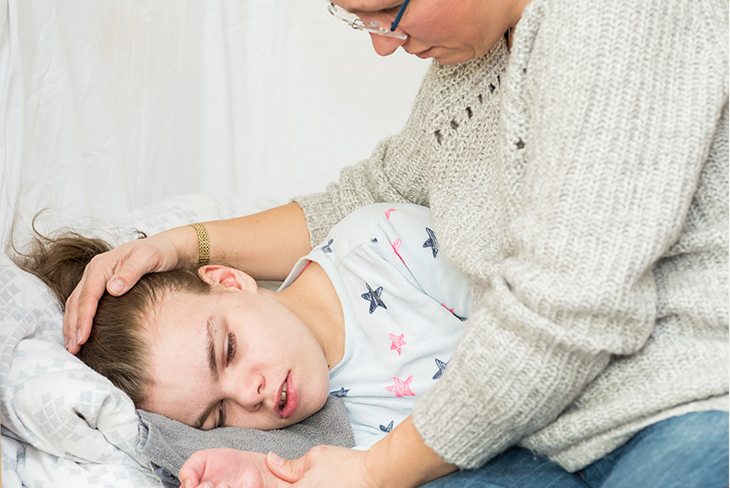Seizure first aid

Convulsions are one of the physical signs of epilepsy and, while they can be scary, decisive action can keep a patient safe and prevent further harm. Here are some tips to keep in mind.
According to Epilepsy South Africa, the condition affects one in every 100 people in South Africa, which is approximately half a million South Africans, based on a total estimated population of 52 million. The cause of the disease is mostly unknown in about 66% of cases, but seizures are common. People with epilepsy do not always have convulsions since there are different types of epilepsy and different types of seizures.
What is a seizure?
A seizure or convulsion can occur at any age and at any time. These are due to abnormal electrical activity in the brain, which results in uncontrollable jerks and muscular activity as well as a loss of consciousness. Some people experience an aura or warning before they have a seizure, but often there is no warning at all. A seizure can range from mild to severe and can last several minutes. Most patients need a few hours to recover since it is very traumatic and physically demanding. Some of the most common signs (though not all are always present) include:
- Twitching, jerking, convulsive movements of the face and limbs
- Saliva expelled through clenched teeth
- Loss of consciousness
- Loss of bladder or bowel control
- Blue tinge to lips
- Flushed and dry skin in a child experiencing a febrile convulsion
How can you help?
1. Put the patient first
- DO protect the patient from injury.
- DO clear any surrounding furniture, electrical appliances or other potential hazards.
- DO try to keep the patient positioned on their side.
- DON’T try to move or restrain the patient’s movements since this could result in a broken bone or soft-tissue injury.
- DON’T put anything in the patient’s mouth, as this could damage the mouth tissue or teeth.
2. Concentrate on the seizure
- DO stay with the patient until the seizure ends.
- DO keep bystanders back if you’re in a public place, and reassure them that it will pass soon.
- DON’T try to hold the person during the seizure.
- DON’T leave the patient alone. Stay close and monitor the situation.
3. Monitor the patient after the seizure
- DO keep the patient on their side and clear the airway if you think it may be obstructed.
- DO cover them lightly with a jacket or blanket and let them rest.
- DON’T wake them if they are resting. The patient needs to sleep until fully recovered.
- DON’T stop monitoring them. If they do not wake and their breathing is shallow or laboured, call an ambulance or paramedic service immediately.
4. Assess the patient
- DO check the patient for any possible injuries that could have been sustained during the seizure.
- DO calm and reassure the patient that they are safe and out of danger.
- DO contact their doctor to let them know about the seizure. If it is the first time the person has experienced this, it is important that they see a doctor who might refer them to a neurologist to confirm the diagnosis, since the seizure might not be the result of epilepsy.
- DON’T send the patient home on their own after a seizure.
Convulsions in children
Young children can experience convulsions due to an increase in core body temperature, otherwise known as febrile convulsions. Fevers in children are very common and can be the result of infection or an underlying illness such as tonsillitis or an ear infection. These are important safety tips:
- DO cool the child by removing all outer clothing, leaving them only in their nappy or pants.
- DO make sure they are not restrained and that potential hazards have been removed.
- DO stay close by until the convulsion ends.
- DON’T give the child any food or drink until the seizure has passed and the child is awake and alert.
- DON’T place the child on their side until the convulsion is completely over.
- DON’T hesitate to call an ambulance or paramedic service if you are in any way concerned about the child’s breathing or responses after the convulsions.
If you are concerned about the frequency of fevers or convulsions in a child, it is best to consult a paediatrician.
The information is shared on condition that readers will make their own determination, including seeking advice from a healthcare professional. E&OE. Life Healthcare Group Ltd does not accept any responsibility for any loss or damage suffered by the reader as a result of the information provided.

